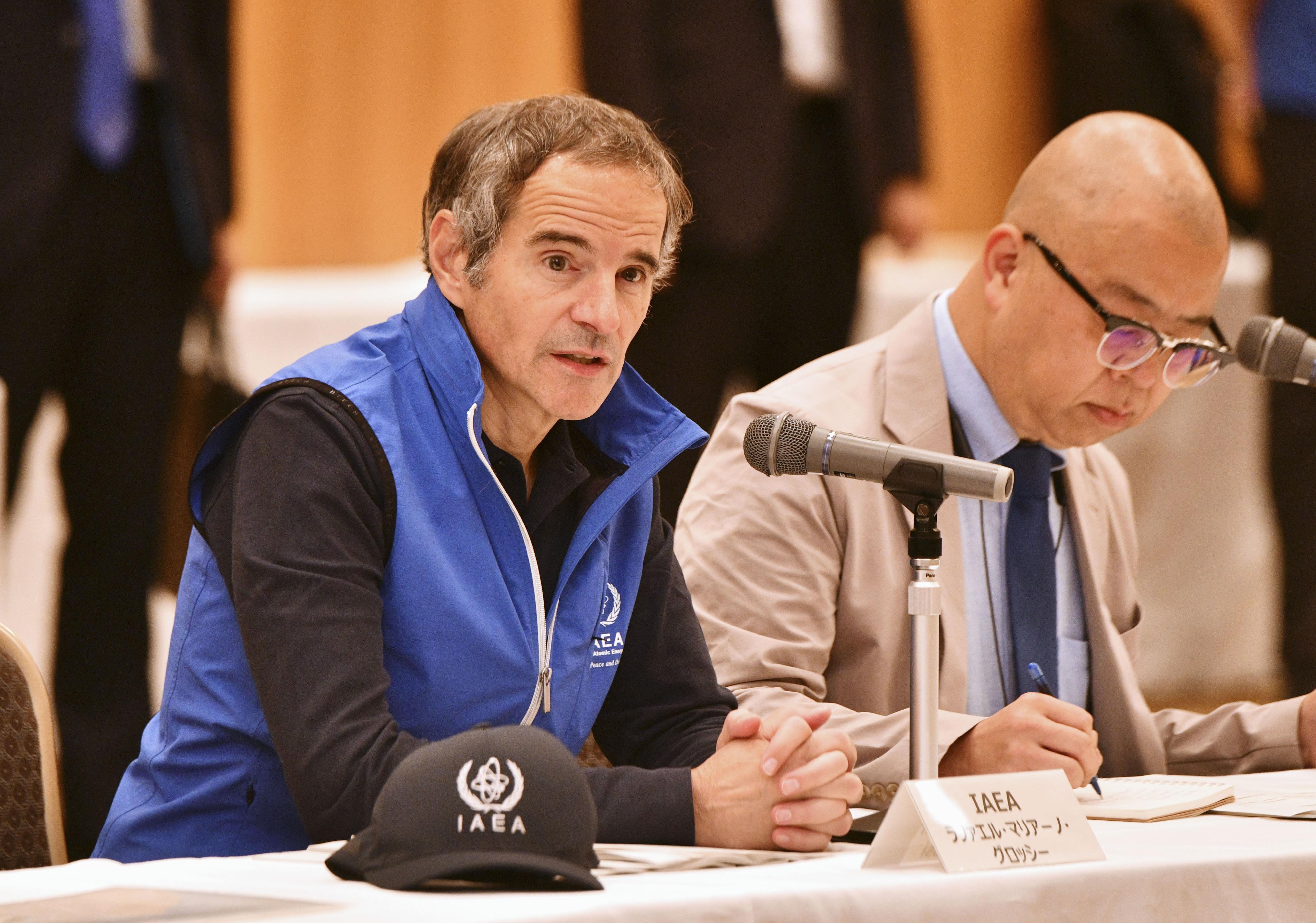IAEA opens office at Fukushima nuclear plant before water release

FUKUSHIMA, Japan, July 5 Kyodo - The International Atomic Energy Agency opened Wednesday a field office at the crippled Fukushima nuclear power plant to monitor the safe discharge of treated radioactive water into the Pacific Ocean.
The inauguration of the office came as IAEA Director General Rafael Grossi visited the Fukushima Daiichi power plant, a day after the U.N. nuclear watchdog assured the safety of Japan's discharge plan amid concerns from local fishermen as well as China and other neighboring countries.
Grossi told reporters after his visit that he is aware of such concerns over the plan and takes the matter seriously.
"The IAEA is everybody's institution" and its mission is to ensure "nuclear safety," Grossi said at the Fukushima plant, damaged by a powerful earthquake and ensuing tsunami in 2011.
The IAEA said it plans to provide real-time updates on the water discharge process, including relevant data, on its website, with Grossi pledging IAEA experts "will come back to Fukushima repeatedly" as their work has not yet concluded with the release of the assessment.
Amid lingering worries about the water release, Grossi said his agency will station officials at the Fukushima field office when the discharge starts and keep ensuring the discharge is conducted in accordance with the plan. The process is expected to take over several decades.
At the defunct plant, Grossi inspected from an observation deck how the relevant facilities are ready for the discharge of treated water and also observed flounder and abalone raised in tanks with a concentration level of tritium equivalent to the treated water.
Prior to his visit there, he exchanged views with the heads of local governments and fishermen who live near the plant, promising that the IAEA will remain in the prefecture until all the stored water is safely released into the sea.
The government and plant operator Tokyo Electric Power Company Holdings Inc. aim to begin releasing the water, processed to remove most radionuclides except tritium, around the summer.
Local fishermen and some neighboring countries remain opposed to the plan out of concerns over the potential impact, including reputational damage to seafood products.
"Many people still think treated water equals contaminated water" and the government needs to remove their anxiety, Jun Yoshida, mayor of Okuma, said at a meeting in Iwaki between central government officials and local representatives.
On Tuesday, the Vienna-based U.N. agency released a comprehensive report that concluded Japan's water discharge plan is "consistent" with international safety standards and would have "a negligible radiological impact on people and the environment."
Japan's Nuclear Regulation Authority on Wednesday indicated that it will issue on Friday certificates to TEPCO facilities at the plant involved in discharging the water to show they have passed inspection.
The body has completed inspections of the transfer, dilution and discharge facilities.
During the three-day inspection from June 28, the regulators checked whether the whole system would function normally, including emergency isolation valves and equipment responsible for diluting treated water with seawater.
Prime Minister Fumio Kishida's government will formally decide when to start releasing the water by taking into account the findings of Japan's nuclear authorities and the IAEA.
The treated water will be diluted to one-40th of the concentration permitted under Japanese safety standards before being released via an underwater tunnel 1 kilometer off the power plant.
==Kyodo





